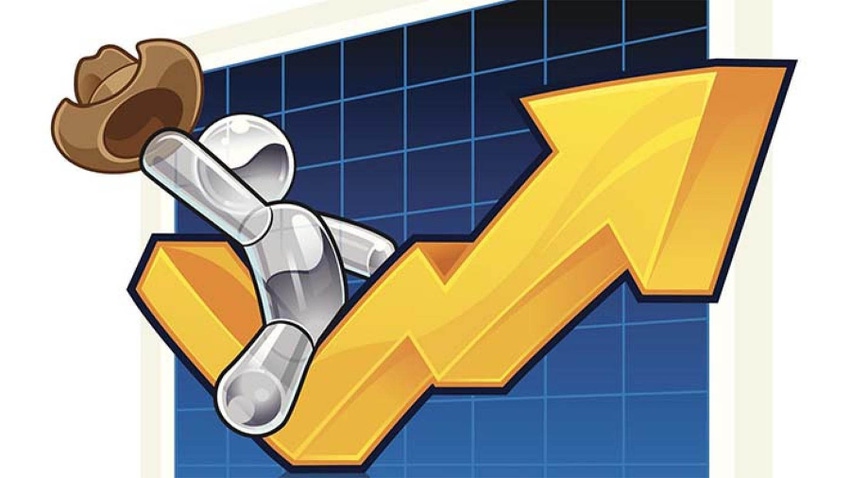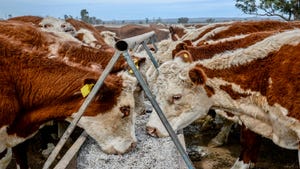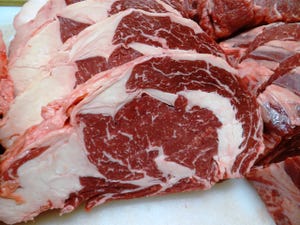Running a race vs. cattle marketing
Don't be afraid to adjust your target in either.
April 5, 2024

A couple weeks ago I parked my pickup at a trail head and went on a 12-mile run. Before I start each run, I usually have a set pace/time that I want to try and achieve. I usually set this target a little beyond what I think I can do because it helps motivate me. I have an app on my phone that will tell me my time, distance, average pace and split pace after each mile.
The first six miles I was feeling good and was blowing the doors off my target pace. Then I had to turn around and run back to my truck. This is when I had to fight the cold wind that was gusting to near 40 mph and some elevation gain. My split paces were almost 3 minutes slower, and my average pace was dropping fast. Fighting those elements, I started to tire and my legs were burning.
Change the training program
There is a race I am thinking of entering later this summer. Before I even got back to my pickup on that run, I knew I had to change my training program, and I was already starting to think of what the new program may look like. I know that if I go ahead and enter the race but do not make some changes, I will not finish that race.
The way my body felt from responding to the elements that day was a leading indicator. I can look at the results I am getting right now and realize I need to adjust to hit my target. If I just keep doing what I am doing and then tried to run the race at the end of the summer, I'd find out then that I could not finish. This would be a lagging indicator.
Pay attention
When taking care of cattle, there are all kinds of leading indicators that could keep us out of financial troubles if we pay attention to them. A scale is the tool that will help identify and guide us to interpret leading indicators. If we have some calves on the place and we’ve been feeding them for a couple months, weighing some of the calves provides a good idea of what they weigh.
We can then calculate how much they gained since we got them home. If we have done a good job tracking our costs against these calves, we can calculate their Cost of Gain (COG). This is a leading indicator because then we can do some quick algebra to decide whether we should keep feeding some more weight on them or if they are over-valued to something else. From there, they should be marketed to capture the best profit margin.
High cost of gain
Sometimes I get a phone call about a group of calves that were sold that didn’t gain well and had a super high COG. The question is always what can I buy back? Is there any way I can salvage this? I always ask why the COG was so high. This should probably be figured out before we think of buying more cattle.
Upon asking a few questions, I uncover there was a health wreck. In some cases what they describe was classic PI BVD. I will ask if they tested for it. None of these people had ever been through it before, so they had no idea what they should be looking for it. They kept doctoring cattle, running up their drug costs, and along the way, absorbing some death loss. In between waves, they decided to cut their losses and sell the cattle. Of course, the cattle didn’t show well and as a result didn’t sell well either.
The lagging indicator
After dumping the cattle, these people finally figured out how bad of a situation they had gotten themselves into. This is a lagging indicator. As I just described above, if they had paid attention to the symptoms and asked a veterinarian some questions, or asked another cattle producer for some feedback, they would likely have made different decisions, instead of just dumping the cattle. This would have prevented them from being backed into a corner.
When looking at symptoms cattle are exhibiting, I first want to point out the are lagging indicators. We think a pen rider’s job is to go out and find the sick ones. At that point, we are already late. A pen rider’s first job should be to make sure the requirements for healthy animals are being met. So, they should be monitoring those behaviors first. If they start finding some sick cattle, they should figure out what it is they missed.
Look for primary and secondary symptoms
Admittedly we don’t all catch that and will end up with some sick ones. We then should figure out if we are looking at primary symptoms or secondary symptoms. Pink eye for example is a secondary symptom of other more serious illnesses, but we just treat them for pinkeye. I have gotten calls about trying to salvage a situation from a marketing standpoint, and like I said, we play 20 questions.
I then discover that they followed the advice of “just drive them” when the cattle were sick. No one properly diagnosed what they had and when the sick animals were taken for a walk, they had contact with other animals on the yard. As a result, those that were doing just fine began getting sick and dying. Now we are dealing with lagging indicators again because we ignored the leading indicators. Here is a leading indicator I want to share: do not seek advice from people who have never done this job.
Gather the information—all of it
When we hit that bump in the road, or worse, find ourselves in a train wreck situation, we must look at the indicators. Gather as much information as possible and turn this information into leading indicators before making knee jerk decisions that will make the financial situation worse.
Put in the time and work
Sometimes I get asked why I put so much time and effort into starting groups. I won’t buy a new set of cattle unless I am committed to taking care of them, so that means I must be home for a few weeks. This is why I don’t bring in new calves when I have marketing schools coming up on the calendar. Lagging indicators from the past have taught me that I am always going to have to work with every set of cattle. I can work at preventing the train wreck, or I can work at cleaning up the train wreck. Either way, I am going to work at it. Use this experience and turn it into a leading indicator; do things right from the very beginning. Not learning from experience is a lagging indicator.
The opinions of Doug Ferguson are not necessarily those of beefproducer.com, beefmagazine.com or Farm Progress.
About the Author(s)
You May Also Like





